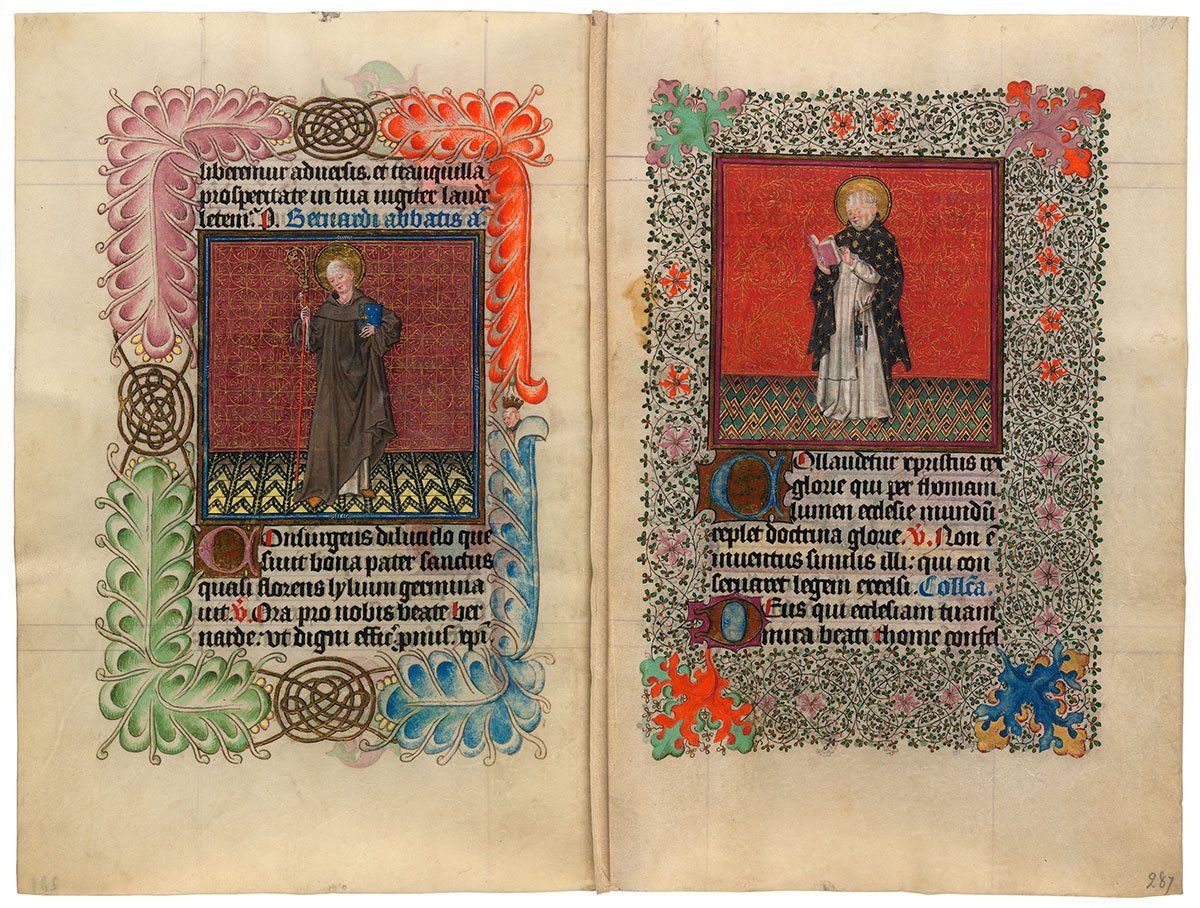MS M.917/945, pp. 286–287

St. Bernard
St. Thomas Aquinas
Purchased on the Belle da Costa Greene Fund with the assistance of the Fellows, 1963
Bernard is clothed in a brown monastic cassock, holding a book and crozier. Strangely, he is not in the white garb of the Cistercians, in whose service he founded the famous monastery in Clairvaux. The border is comprised of colorful plumes connected by gold interlace on three sides and, on the fourth side, a small portrait. This tiny man being crowned by a hand reaching down from the frond above may represent William of Aquitane, saved from excommunication by the actions of Bernard.
The portly Thomas reads from a book representing his status as philosopher and doctor of the church. He wears the white Dominican habit and an interesting star-flecked black cape, perhaps an allusion to his title, doctor angelicus. From his girdle hang a short knife and a small case with keys attached to the bottom. The delicate border combines five-petaled flowers interlaced with a leafy vine.
Suffrages
Suffrages are short prayers to individual saints. As protectors of medieval people, saints were their doctor in plague, their midwife at childbirth, their guardian when traveling, and their nurse during toothache. If the Virgin was the figure to whom one addressed the all-important petition for eternal salvation, it was from saints that one sought more basic or temporal kinds of help. While the Virgin became, as the Mother of God, almost a goddess herself, saints retained more of their humanity and thus their approachability.
Image courtesy of Faksimile Verlag Luzern